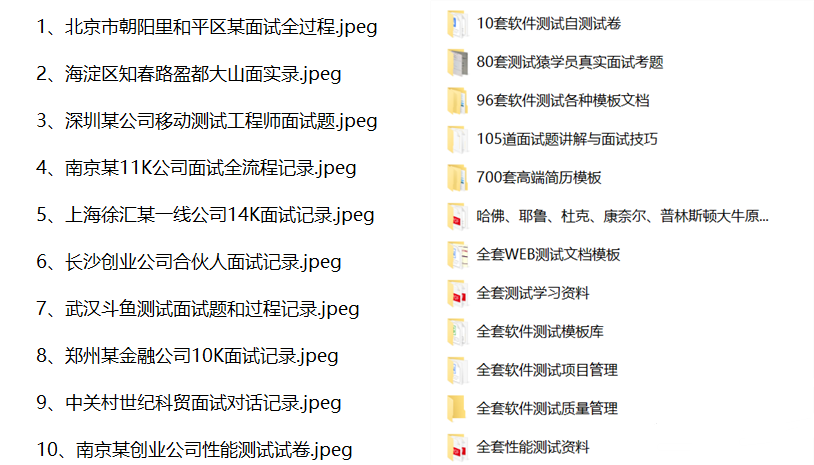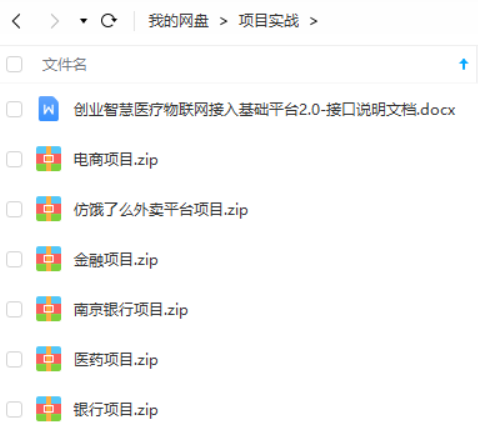
高级数据结构
字典 (dict)
字典是一种键值对的数据结构,非常适合用于存储和检索数据。
# 创建字典:
person = {"name": "Alice", "age": 25, "city": "New York"}
# 访问字典元素:
print(person["name"]) # 输出: Alice
print(person.get("name")) # 输出: Alice
# 添加和修改元素:
person["email"] = "alice@example.com" # 添加新元素
person["age"] = 26 # 修改现有元素
# 删除元素:
del person["city"] # 删除元素
# 遍历字典:
for key, value in person.items():
print(f"{key}: {value}")集合 (set)
集合是一种无序且不重复的数据结构,非常适合用于去重和集合操作。
# 创建集合:
numbers = {1, 2, 3, 4}
# 添加和删除元素:
numbers.add(5) # 添加元素
numbers.remove(3) # 删除元素
# 集合操作:
set1 = {1, 2, 3}
set2 = {3, 4, 5}
union = set1 | set2 # 并集
intersection = set1 & set2 # 交集
difference = set1 - set2 # 差集
symmetric_difference = set1 ^ set2 # 对称差集文件和目录操作
在自动化测试中,文件和目录操作是必不可少的一部分。Python 提供了多种方法来处理文件和目录。
文件路径操作
# 导入 os 模块:
import os
# 获取当前工作目录:
current_dir = os.getcwd()
print(current_dir)
# 改变工作目录:
os.chdir("/path/to/new/directory")
# 创建目录:
os.mkdir("/path/to/new/directory")
# 删除目录:
os.rmdir("/path/to/directory")
# 列出目录内容:
files = os.listdir("/path/to/directory")
print(files)文件路径操作
# 路径拼接:
path = os.path.join("/home/user", "data", "file.txt")
print(path)
# 检查文件或目录是否存在:
if os.path.exists("/path/to/file.txt"):
print("File exists")
else:
print("File does not exist")
# 获取文件大小:
size = os.path.getsize("/path/to/file.txt")
print(size)正则表达式
正则表达式是处理字符串的强大工具,特别是在解析和匹配文本时非常有用。
# 导入 re 模块
import re
# 基本匹配
# 匹配字符串:
pattern = r"\d+" # 匹配一个或多个数字
text = "The price is 100 dollars."
match = re.search(pattern, text)
if match:
print(match.group()) # 输出: 100
# 替换字符串:
new_text = re.sub(r"\d+", "XXX", text)
print(new_text) # 输出: The price is XXX dollars.
# 查找所有匹配项:
matches = re.findall(r"\d+", text)
print(matches) # 输出: ['100']日志记录
在编写自动化测试脚本时,日志记录是非常重要的,可以帮助你追踪程序运行过程中的信息和错误。
# 导入 logging 模块
import logging
# 设置日志级别
# 基本配置:
logging.basicConfig(level=logging.DEBUG,
format='%(asctime)s - %(levelname)s - %(message)s')
# 记录日志:
logging.debug("This is a debug message")
logging.info("This is an info message")
logging.warning("This is a warning message")
logging.error("This is an error message")
logging.critical("This is a critical message")
# 输出到文件
# 配置日志文件:
logging.basicConfig(filename='app.log', level=logging.DEBUG,
format='%(asctime)s - %(levelname)s - %(message)s')单元测试
单元测试是验证代码正确性的关键步骤。Python 提供了 unittest 模块来简化单元测试的编写和执行。
# 导入 unittest 模块
import unittest
# 编写测试用例
# 定义测试类:
class TestAddition(unittest.TestCase):
def test_add(self):
self.assertEqual(add(1, 2), 3)
def test_add_negative(self):
self.assertEqual(add(-1, -2), -3)
if __name__ == '__main__':
unittest.main()
# 定义测试函数:
def add(a, b):
return a + b性能分析
性能分析可以帮助你找出程序中的瓶颈,并优化代码。Python 提供了 cProfile 模块来进行性能分析。
导入 cProfile 模块
import cProfile
分析函数
使用 cProfile 分析函数:
def example_function():
# Your code here
pass
cProfile.run('example_function()')第三方库
Python 社区提供了大量的第三方库,可以极大地扩展 Python 的功能。下面是一些常用的第三方库。
安装第三方库
使用 pip 安装库:
pip install requests
pip install beautifulsoup4使用第三方库
# 使用 requests 库发送 HTTP 请求:
import requests
response = requests.get("https://api.example.com/data")
print(response.status_code)
print(response.json())
# 使用 beautifulsoup4 解析 HTML:
from bs4 import BeautifulSoup
import requests
response = requests.get("https://www.example.com")
soup = BeautifulSoup(response.text, 'html.parser')
print(soup.title.string)最后: 下方这份完整的软件测试视频教程已经整理上传完成,需要的朋友们可以自行领取【保证100%免费】

软件测试面试文档
我们学习必然是为了找到高薪的工作,下面这些面试题是来自阿里、腾讯、字节等一线互联网大厂最新的面试资料,并且有字节大佬给出了权威的解答,刷完这一套面试资料相信大家都能找到满意的工作。




























 51万+
51万+

 被折叠的 条评论
为什么被折叠?
被折叠的 条评论
为什么被折叠?








